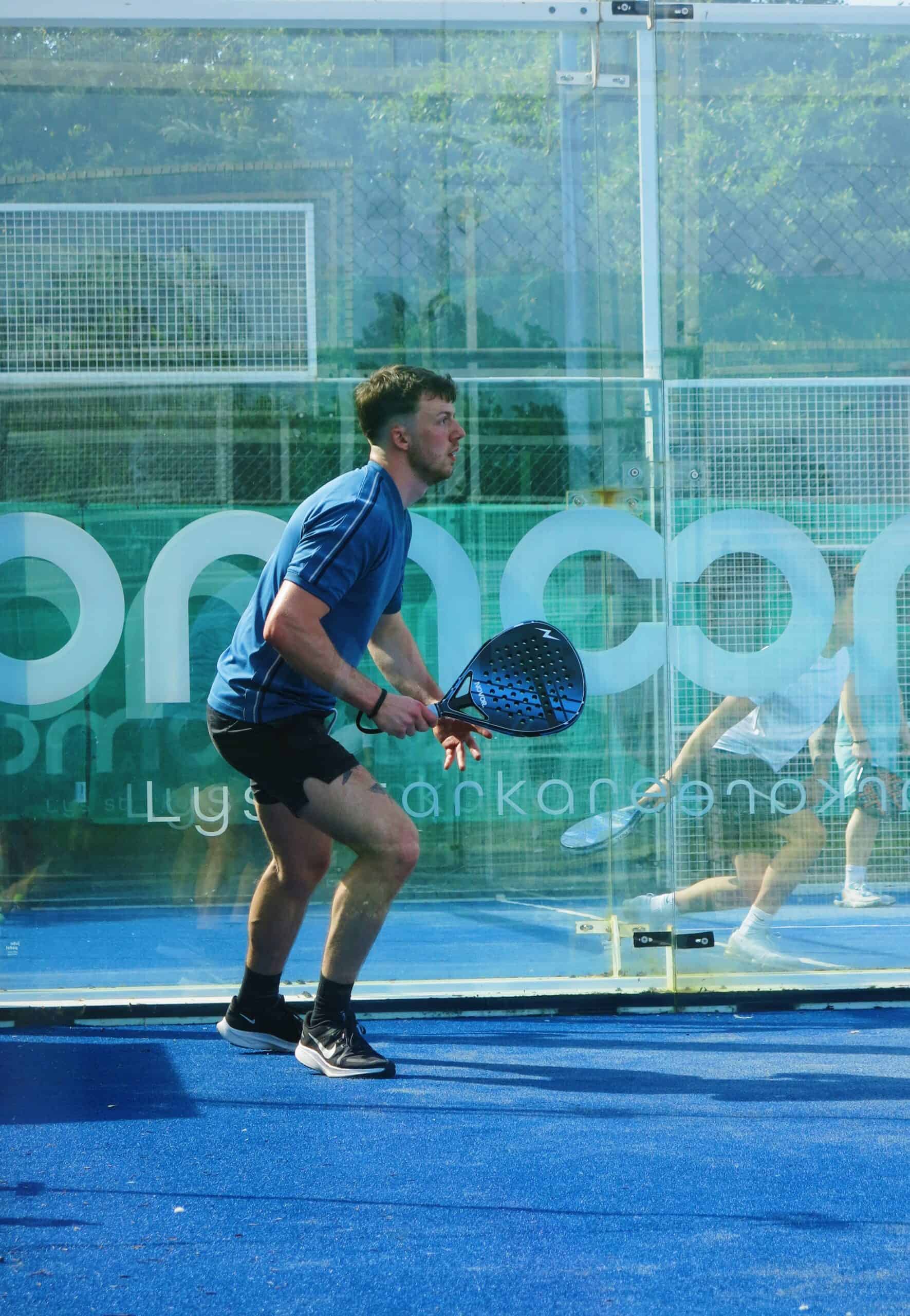
This blog will go into the distinct differences between padel shoes and tennis shoes, considering various aspects such as court surface, lateral support, cushioning, toe drag protection, and weight.
Tennis Shoes:
Tennis is a versatile sport played on various surfaces like clay, grass, and hard courts. As a result, tennis shoes are engineered to adapt to these diverse court types. The outsole of tennis shoes is designed with a tread pattern that provides traction on different surfaces. This adaptability is crucial for tennis players who may encounter varying court conditions during tournaments or regular play.
Padel, on the other hand, is primarily played on artificial grass or turf courts. The playing surface in padel is relatively consistent across different locations, and this specificity allows for the design of padel shoes with a sole that caters to the demands of artificial grass. Padel shoes may have a distinct outsole pattern optimised for the texture of padel courts, offering players the right balance between grip and slide.
Tennis Shoes:
Tennis involves quick lateral movements, especially during baseline rallies and net play. Players often make abrupt directional changes, necessitating shoes with very strong lateral support. Tennis shoes typically feature reinforced sides and a sturdy overall construction to provide stability during quick lateral shifts. This design helps prevent injuries that may result from the constant lateral motion inherent in tennis.
Padel Shoes:
Padel, like tennis, also demands lateral movements, but the intensity may differ. Padel shoes are crafted to strike a balance between lateral support and flexibility. While they need to support lateral shifts, they also allow for the agility required for the dynamic and strategic aspects of padel. The design of padel shoes considers the specific lateral demands of the game and tailors the level of support accordingly.

Tennis Shoes:
The nature of tennis involves a combination of explosive sprints, sudden stops, and quick pivots. To address the impact of these movements on the player’s feet and joints, tennis shoes often incorporate advanced cushioning technologies. These technologies help absorb shock during abrupt stops and provide the necessary comfort and support for the player’s feet.
Padel Shoes:
While cushioning is also a consideration for padel shoes, the emphasis might differ from that of tennis shoes. Padel involves prolonged rallies with less intense sprinting compared to tennis. Therefore, padel shoes prioritise cushioning for comfort during extended play rather than focusing solely on shock absorption during high-impact sprints.
Tennis Shoes:
In tennis, players often perform toe-dragging movements, particularly during serves and volleys. To address the abrasion resulting from these actions, tennis shoes frequently have reinforced toe areas. This protective layer helps extend the lifespan of the shoes and shields the player’s toes from the wear and tear associated with toe dragging.
Padel Shoes:
While some toe-dragging movements can occur in padel as well, the intensity is generally lower compared to tennis. As a result, padel shoes may have a moderate level of toe protection, balancing the need for durability with considerations for weight and flexibility.
Tennis Shoes:
The weight of tennis shoes can vary based on player preferences and playing style. Some players prefer lightweight shoes for enhanced agility, allowing for quick movements around the court. Others may opt for slightly heavier shoes to provide additional stability during lateral movements and rapid changes in direction.
Padel Shoes:
Padel shoes often lean towards being lightweight. The fast-paced nature of padel, with its emphasis on quick reflexes and agile footwork, makes lighter shoes desirable for many players. The reduced weight contributes to the overall responsiveness of the player on the court.
Overall, while there are overarching similarities in the design features of padel and tennis shoes due to the shared elements of racket sports, the specific demands of each sport lead to subtle differences in the construction of these footwear options. Players, therefore, have the opportunity to choose shoes that align with their playing style, the characteristics of the court surface, and their individual comfort preferences. The evolution of shoe technology continues to contribute to the refinement of both padel and tennis footwear, enhancing the overall experience for players in these dynamic and engaging sports.
Managing Director
We’re dedicated to upholding the highest standards of customer service and delivering on providing premium padel rackets. Please explore our extensive list of reviews to see what our customers have to say!
Super, top quality gear and a super helpful team. Have definitely secured my future business. 🤩
I had the chance to try the Novor padel racket last weekend and I was very surprised with the quality, weight and it’s balance distribution. Very good relation price quality and highly recommended. Very good effort and work developing their first official product by the guys of Novor!
What a stunning racket. Very good price, especially for a carbon racket, delivered in 2 days, comes with a nice bag. Beautifully designed and made, looks the business and feels very nicely weighted. Can't fault it. I just need to get better at the game to justify having such a nice piece of kit!

Elevate your padel game with Novor – Precision | Power | Performance. Unleash your potential with our padel rackets designed in London.
VirtualRock Ltd trading as Novor (™) 2023 . All Rights Reserved